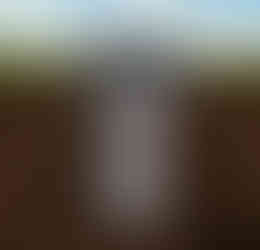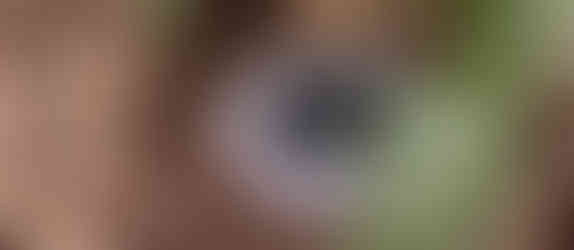Termite Control in Coastal Regions of Australia
- Andrea MacGillivray
- Dec 18, 2024
- 5 min read
Updated: Jun 20
Eliminate termites before they turn your house into a buffet!
Termites, often mistakenly referred to as “white ants,” pose a significant concern for Australian homeowners, particularly in coastal areas. These small critters are a hidden threat that can cause extensive damage to wooden structures and homes if left untreated. Understanding what termites are, why they thrive in specific environments, and how to respond effectively can save homeowners from costly repairs.
What are Termites?
Despite the colloquial term, these pale, soft-bodied insects are NOT ‘white ants.’ Termites have straight antennae, unlike ants, which have bent antennae. They belong to the order, Isoptera, and their primary role in nature is to break down wood and plant matter, recycling nutrients back into the ecosystem. Unfortunately, this natural behaviour becomes a problem when termites target the timber, plaster, insulation and even the wiring in homes.


Termite behaviour and habitat.
As shown below, termites live in colonies, with numbers ranging from a few thousand to millions of insects. There are also several species of termites in Australia, with subterranean termites being the most destructive to homes. They build underground tunnels and mud tubes to access food sources, making them difficult to detect until significant damage has occurred.
Termites typically swarm during warm, humid weather, and the timing of this activity can depend on the species and local climate. In many areas, swarming often occurs in the spring or early summer, typically after a rainfall when conditions are ideal for mating. Swarms generally happen during the day, and you may see large numbers of winged termites (called alates) flying around in search of new places to start colonies.
The importance of termite swarming is two-fold:
Indication of an infestation: A swarm of termites usually means that there is an established colony nearby, and that colony is attempting to expand. If you see a swarm in or around your home, it is a clear sign of active termites.
Potential for future damage: Swarming termites are searching for a new location to create a colony. If they land near your home, they can start a new infestation. This is important because termites can cause significant damage to a building's structural integrity, often before the problem is even noticed.

Why are termites more prevalent in Coastal Areas?
Termites thrive in warm, humid environments, which are common along Australia’s coastal regions. The moisture in these areas creates ideal conditions for termite survival and colony growth. Seaside and coastal homes are more susceptible to termite infestations due to higher humidity levels, damp soil and greater access to decaying timber.
How will you know if there are termites in your home?
Signs include mud tubes on walls or foundations, bulging or hollow-sounding timber, sagging floors or ceilings, and small piles of frass (termite droppings). One can sometimes even hear termites, especially if there’s a large infestation. The sounds they make are often faint, but include
Rustling sounds: Termites chewing on wood or moving within wood that produce a soft rustling sound. This may be more noticeable in quiet environments.
Clicking or tapping noises – Soldier termites produce clicking sounds to warn worker termites of danger, such as when they detect vibrations. This can sometimes be audible in silent rooms.
Tunnelling or chewing noises – In severe infestations, the sound of termites chewing through wood may be more distinct.
What to do if you have termites in your home:
Stay calm, and don’t disturb them. Avoid touching or spraying the insects, as this may cause them to scatter and establish new areas of infestation, making treatment more challenging.
Call Pest Control Solutions. Contact a licensed pest control expert (PESTMAC) who specialises in termite management. Professionals possess the necessary tools and expertise to locate the colony and apply the appropriate treatment methods.
Schedule a Termite Inspection: A thorough inspection will determine the extent of the infestation and identify the specific termite species. This information helps create a targeted and effective treatment plan.
Implement Treatment: Your pest professional may recommend baiting systems, chemical barriers, or other treatments to eradicate termites and prevent future infestations.
Repair Damage: Once the termites have been eliminated, consult a builder or carpenter to assess and repair structural damage.
What NOT to do if you have termites in your home
Do Not Use DIY Sprays or Treatments: Store-bought sprays may kill a few termites on contact, but they will not eliminate the entire colony. Worse, they can cause termites to retreat deeper into the structure.
Do Not Disturb Mud Tubes: Termites use mud tubes to travel safely. Breaking them can cause termites to relocate, making it harder for pest control professionals to treat the infestation.
Do Not Delay Action: Ignoring a termite problem will only allow the infestation to worsen. Early intervention can prevent extensive and costly damage.



Termite Control and Use of Specialist Technology
Advanced technology is often needed to detect termites effectively and monitor their activity in real-time. Specialists incorporate a range of tools designed to accurately identify and treat termite infestations without causing significant disruption to the colony.
Detection methods applied, but not limited to:
Radar technology: Termites are often hidden inside walls or underground, making it difficult to locate them through conventional methods. Radar provides a non-invasive and accurate method for detecting termites without causing damage to the property. It identifies active infestations that may otherwise go unnoticed, ensuring early intervention.
Moisture sensors: Moisture is a key indicator of termite activity, as termites are attracted to areas with high moisture levels. Using moisture sensors helps pinpoint potential nesting sites or pathways, which is crucial in identifying infestations early.
Thermal Imaging: Termites generate heat as they feed and tunnel, which creates detectable temperature changes in their environment. Thermal imaging helps identify these changes, further enhancing the precision of detecting hidden termite colonies or activity.
Real-Time Monitoring: Monitoring termite activity in real time allows pest control professionals to track the effectiveness of treatment and make necessary adjustments. It helps in assessing the scope of an infestation and ensuring that the treatment applied is having the desired effect.
Treatment Options: Once termites are detected, it's essential to choose the proper treatment based on the location and severity of the infestation. A variety of treatments can be applied based on the severity of the infestation. These may include baiting, liquid barriers, or other chemical or physical treatments, depending on the circumstances.
How can termites be prevented?
Comprehensive insurance in Australia typically does not cover termite damage. Most standard home insurance policies, including comprehensive ones, exclude damage caused by termites. This is because termite infestations and their resulting damage are considered preventable through regular inspections and maintenance, which are the homeowner's responsibility.
If you're concerned about termites, it’s recommended to:
Schedule regular termite inspections by a qualified pest control professional.
Consider preventative treatments to protect your home.
Read your insurance Product Disclosure Statement (PDS) to understand the exclusions.
In summary, preventative measures include reducing moisture around the home, keeping timber and firewood away from the house, ensuring good ventilation, and scheduling regular (annual) timber pest inspections.
Conclusion
Certain termite species have a voracious appetite for destruction and can cause significant damage to homes, particularly in coastal areas where conditions are ideal for their survival. Early detection, professional treatment, and regular inspections are the keys to protecting your property. By understanding what to do and what not to do, homeowners can effectively manage termite problems and prevent costly repairs.
If you suspect termites, always seek expert advice and act promptly—your home depends on it.

Protect your investment from the ruinous effects of termites with PESTMAC's expert pest control services. Our team specialises in efficient, eco-friendly termite solutions, ensuring your property stays safe and secure. With thorough inspections and tailored treatments, we provide long-lasting protection against infestations. Don’t let termites undermine your home—trust PESTMAC to keep your property safe from the ground up!















Comments